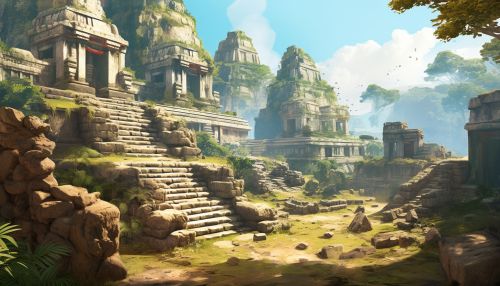Mesoamerican civilization
Origins and Development
The Mesoamerican civilization, also known as the Pre-Columbian civilization, was a complex and diverse cultural phenomenon that emerged in the region of Mesoamerica, which encompasses present-day Mexico and parts of Central America. The civilization, which developed over a period of 3,000 years from 1500 BC to 1519 AD, was marked by the rise and fall of several distinct cultures and city-states, each contributing to the overall development of Mesoamerican society, politics, economy, and culture.


Cultural Traits
The Mesoamerican civilization was characterized by a number of shared cultural traits. These included the development of Hieroglyphic writing, advanced astronomy, monumental architecture, and complex social stratification. The civilization also shared a common cosmology and religious beliefs, with a pantheon of gods and goddesses that were worshipped across different cultures and periods.
Major Cultures
Olmec
The Olmec culture, which flourished from 1400 to 400 BC, is often considered the "mother culture" of Mesoamerica. The Olmecs are known for their colossal stone heads, sophisticated jade carvings, and the development of the earliest known Mesoamerican writing system.
Maya
The Maya civilization, which thrived from 2000 BC to 900 AD, is renowned for its advanced writing system, monumental architecture, and sophisticated understanding of mathematics and astronomy. The Maya civilization was organized into city-states, each with its own ruler and governing structure.
Aztec
The Aztec civilization, also known as the Mexica, emerged in the 14th century AD and dominated Mesoamerica until the Spanish conquest in the 16th century. The Aztecs are known for their monumental architecture, including the Templo Mayor in their capital city of Tenochtitlan, and their complex social and political organization.
Religion and Cosmology
Religion played a central role in Mesoamerican civilization, with a complex pantheon of deities and a cosmology that viewed the universe as a series of interconnected and cyclical worlds. Ritual practices, including human sacrifice, were a key aspect of religious expression in Mesoamerican cultures.
Legacy
The Mesoamerican civilization left a profound legacy in the form of its monumental architecture, art, writing systems, and scientific knowledge. Despite the destruction wrought by the Spanish conquest, many aspects of Mesoamerican culture have survived and continue to influence contemporary societies in the region.
